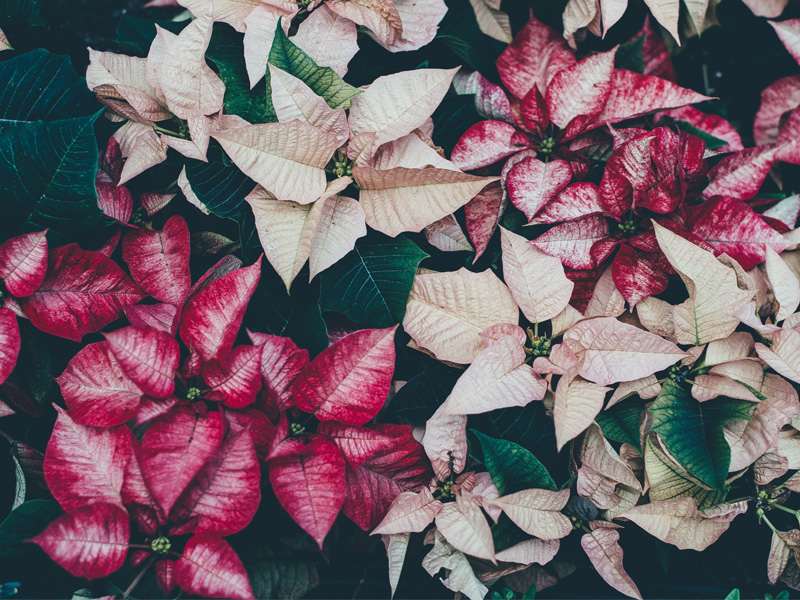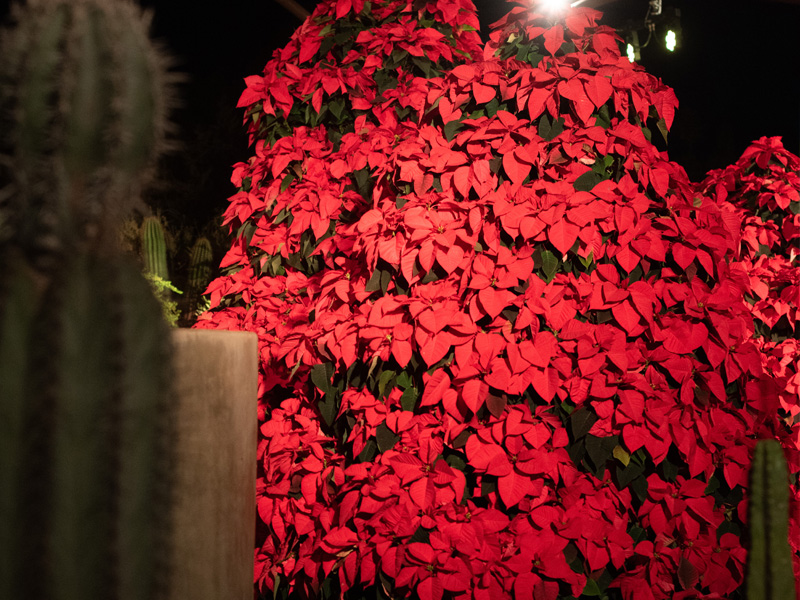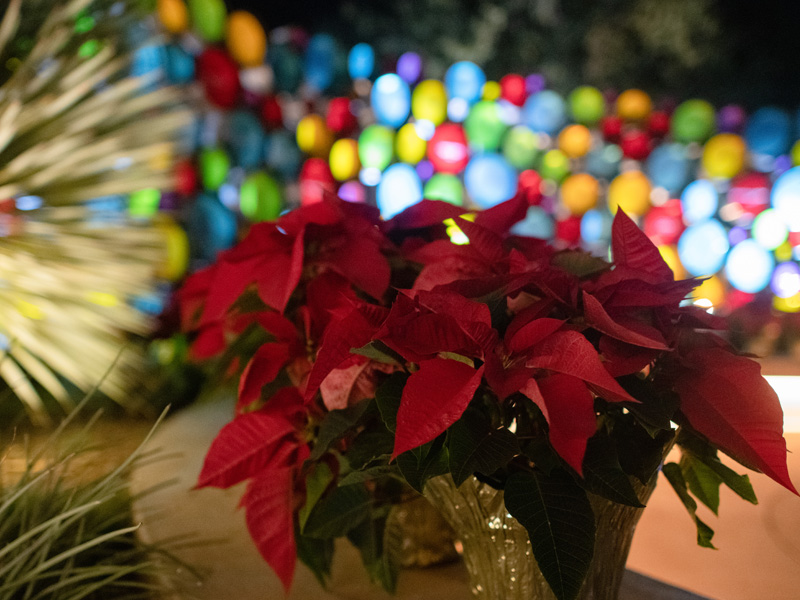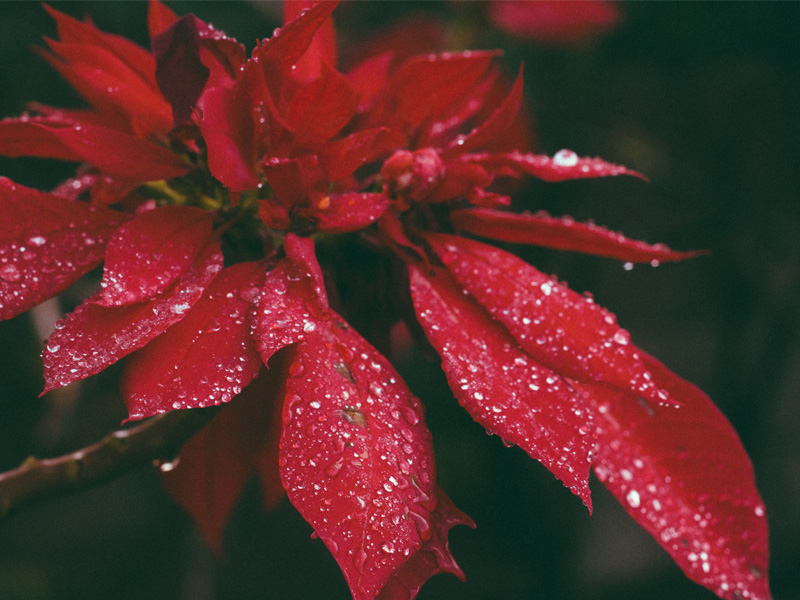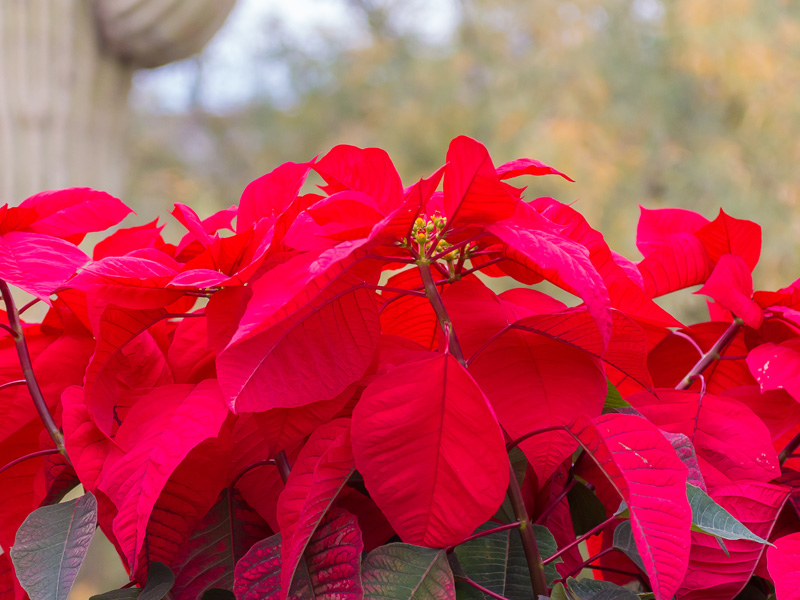The holidays aren’t complete without a poinsettia in the mix. This popular plant has gained so much notoriety that it has it’s own holiday–National Poinsettia Day is celebrated on the 12th of December. In 2019, roughly 35 million poinsettias were sold in the U.S. and used to decorate homes, grace holiday tables or given as gifts. The Garden shares its love for the poinsettia each year during Las Noches de las Luminarias with nearly 500 on display each night.
Check out these fun facts:
- A poinsettia plant’s botanical name is euphorbia pulcherrima, which translates to most beautiful.
- Joel Roberts Poinsett, the first U.S. Ambassador to Mexico and a U.S Congressman, is credited as the first person to introduce poinsettias to the U.S. after discovering them in Mexico.
- The species is native to Central America, specifically in an area of southern Mexico known as ‘Taxco del Alarcon’ where they flower during the winter.
- The red blooms on poinsettia plants are actually not flowers; rather, they are known as bracts. By definition, bracts are simply modified leaves. The actual “flower” on a poinsettia plant is the yellow bloom found right at the center of the bracts.
- The ancient Aztecs prized the Poinsettia as a symbol of purity. They also used the plant to produce red dye and as an antipyretic medication. In Nahuatl, the language of the Aztecs, the plant is called Cuetlaxochitl, meaning “flower that grows in residues or soil”.
- The color of Poinsettia leaves is actually determined by how much light the plant receives. For red leaves, the plants need bright light during the day and pitch black at night (for at least 12 hours).
- A milky latex in the stems and leaves can be irritating to persons or animals sensitive to it, but the claim that poinsettias are deadly poisonous is greatly exaggerated.

